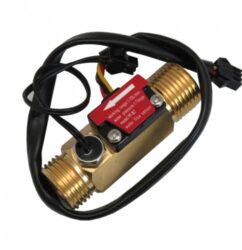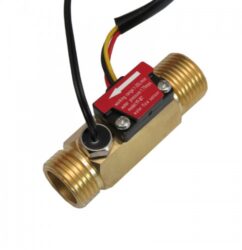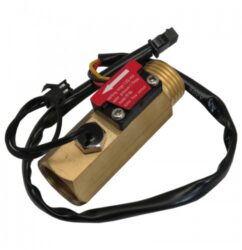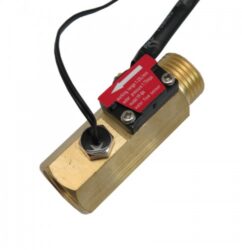- 3D Printer
UPS SERVICE
Shipping & ReturnsSTORES
Find retail locationsFREE SHIPPING
For orders above €100
CUSTOMER CARE
For All Your Questions
- Wireless & IOT
UPS SERVICE
Shipping & ReturnsSTORES
Find retail locationsFREE SHIPPING
For orders above €100
CUSTOMER CARE
For All Your Questions
- Sensors
UPS SERVICE
Shipping & ReturnsSTORES
Find retail locationsFREE SHIPPING
For orders above €100
CUSTOMER CARE
For All Your Questions
- Modules
UPS SERVICE
Shipping & ReturnsSTORES
Find retail locationsFREE SHIPPING
For orders above €100
CUSTOMER CARE
For All Your Questions
- Microcontroller Unit (MCU)
UPS SERVICE
Shipping & ReturnsSTORES
Find retail locationsFREE SHIPPING
For orders above €100
CUSTOMER CARE
For All Your Questions
- Development Boards
UPS SERVICE
Shipping & ReturnsSTORES
Find retail locationsFREE SHIPPING
For orders above €100
CUSTOMER CARE
For All Your Questions
Step 6: Advanced Motion Control and Optimization for BLDC Motors
Introduction
Now that you have successfully simulated stepper motor behavior using a BLDC motor, it’s time to take things to the next level. In Step 6, we will focus on optimizing the motor’s movement and improving its response. We will add features like acceleration and deceleration profiles, implement microstepping-like smooth motion, and optimize the control loop for high-speed applications. This will make the BLDC motor behave more smoothly and precisely, just like a high-performance stepper motor.
In this step, we will:
✅ Add acceleration and deceleration profiles.
✅ Implement smooth motion (similar to microstepping).
✅ Optimize the motor’s response for high-speed applications.
1. Understanding Acceleration and Deceleration Profiles
When you command a motor to move to a new position, it doesn’t always need to start and stop instantly. Sudden changes in speed can cause mechanical stress, increased power consumption, and even cause overshooting. This is where acceleration and deceleration profiles come in.
An acceleration profile is a way to gradually increase the speed of the motor from a standstill, and a deceleration profile gradually reduces the motor’s speed until it stops at the target position. By implementing these profiles, you can make the motor movement smoother and reduce wear and tear.
Acceleration and Deceleration Profile Types:
- Linear Acceleration: The speed increases (or decreases) at a constant rate.
- S-curve Acceleration: The speed increases smoothly, reducing jerk at the start and end.
For simplicity, we will implement linear acceleration in this step, but you can experiment with more advanced profiles once you get comfortable.
2. Smooth Motion (Microstepping-Like Behavior)
Microstepping is a technique used in stepper motors to achieve smoother movement by dividing each step into smaller sub-steps. While microstepping is not directly applicable to BLDC motors (since they don’t move in discrete steps), we can simulate it by increasing the resolution of the movement.
To achieve smooth motion, we need to control the motor speed and position with high precision. Instead of moving the motor from one fixed position to another, we will gradually increment or decrement the position in smaller steps, giving the illusion of microstepping.
3. Code Modifications for Acceleration and Smooth Motion
In this step, we will modify the existing code to:
✅ Implement an acceleration profile.
✅ Gradually smooth the motion to mimic microstepping.
#include <PID_v1.h>
// Define pin variables based on required characteristics
const int encoderA = /* Digital input pin capable of reading high-frequency signals */;
const int encoderB = /* Digital input pin capable of reading high-frequency signals */;
const int pwmPin = /* PWM-capable output pin for ESC control */;
const int stepPin = /* Interrupt-capable input pin for detecting step pulses */;
const int dirPin = /* Digital input pin for reading direction signal */;
volatile int encoder_position = 0;
volatile int setpoint = 0;
double input = 0, output = 0;
// PID Parameters
double Kp = 2.0; // Proportional Gain
double Ki = 0.5; // Integral Gain
double Kd = 0.1; // Derivative Gain
// Acceleration and Deceleration Parameters
double maxSpeed = 100; // Maximum speed
double acceleration = 5; // Rate of acceleration (steps per second)
double currentSpeed = 0; // Current speed
PID myPID(&input, &output, &setpoint, Kp, Ki, Kd, DIRECT);
// Function to simulate acceleration and deceleration
void updateSpeed() {
if (setpoint > encoder_position) {
currentSpeed = min(currentSpeed + acceleration, maxSpeed); // Acceleration
} else if (setpoint < encoder_position) {
currentSpeed = max(currentSpeed - acceleration, 0); // Deceleration
}
}
void encoder_ISR() {
if (digitalRead(encoderA) == digitalRead(encoderB)) {
encoder_position++;
} else {
encoder_position--;
}
}
void step_ISR() {
if (digitalRead(dirPin) == HIGH) {
setpoint++; // Move forward
} else {
setpoint--; // Move backward
}
}
void setup() {
Serial.begin(115200);
pinMode(encoderA, INPUT);
pinMode(encoderB, INPUT);
pinMode(pwmPin, OUTPUT);
pinMode(stepPin, INPUT_PULLUP);
pinMode(dirPin, INPUT_PULLUP);
attachInterrupt(digitalPinToInterrupt(encoderA), encoder_ISR, CHANGE);
attachInterrupt(digitalPinToInterrupt(stepPin), step_ISR, RISING);
myPID.SetMode(AUTOMATIC);
myPID.SetOutputLimits(1000, 2000); // Adjust PWM range for ESC
}
void loop() {
updateSpeed(); // Update speed based on acceleration or deceleration
input = encoder_position;
myPID.Compute();
int pwm_signal = (int)output;
// Control the motor with the calculated PWM signal
analogWrite(pwmPin, pwm_signal);
// Print the status for debugging
Serial.print("Target: "); Serial.print(setpoint);
Serial.print(" | Position: "); Serial.print(encoder_position);
Serial.print(" | PWM: "); Serial.println(pwm_signal);
Serial.print(" | Speed: "); Serial.println(currentSpeed);
delay(50); // Control loop update rate
}4. Testing the System
Now that we have added acceleration and smooth motion to our system, let’s test it:
✅ Testing Steps:
1️⃣ Command the motor to move to a position (e.g., 90° or 180°).
2️⃣ Monitor the speed and position of the motor in real-time.
3️⃣ Observe the smoothness of the movement—there should be no jerky starts or stops.
4️⃣ Adjust the acceleration and max speed values in the code for better control.
What’s Next?
With the knowledge gained in this step, you can now:
✅ Implement S-curve acceleration profiles for even smoother motion.
✅ Develop position compensation to correct errors dynamically.
✅ Use higher resolution encoders for greater precision.
These improvements will allow you to use BLDC motors in advanced applications such as robotics, CNC machines, and gimbals!
Keep Pushing Forward! 🚀
Remember, every step you take gets you closer to mastering motion control. Great projects come from persistent learning and experimentation. Keep coding, keep testing, and most importantly—never stop exploring! 💡🔥
Good luck on your journey, and see you in your next exciting project! 👋😊
Intr




